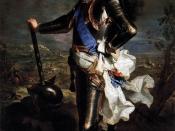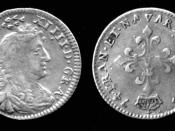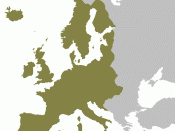Understanding the various forms of baroque art requires knowledge of its historical context. The 17th century could be called the first modern age. Human awareness of the world was continuously expanding. Many scientific discoveries influenced art; Galileo's investigations of the planets, for example, account for astronomical accuracy in many paintings of the time. The assertion of the Polish astronomer Copernicus that the planets did not revolve around the earth was only fully accepted after 1600. The realization that the earth was not at the center of the universe coincided in art with the rise of pure landscape painting devoid of human figures. The active trade and colonization policies of many European nations accounted for numerous portrayals of exotic places and peoples.
Religion determined many aspects of baroque art. The Roman Catholic church was a highly influential patron, and its Counter Reformation, a movement to combat the spread of Protestantism, employed emotional, realistic, and dramatic art as a means of propagating the faith.
The simplicity of Protestantism in countries such as the Netherlands and northern Germany likewise explains the severity of the architectural styles in those areas.
Political situations also influenced art. The absolute monarchies of France and Spain prompted the creation of works that reflected in their size and splendor the majesty of their kings, Louis XIV and Philip IV.


